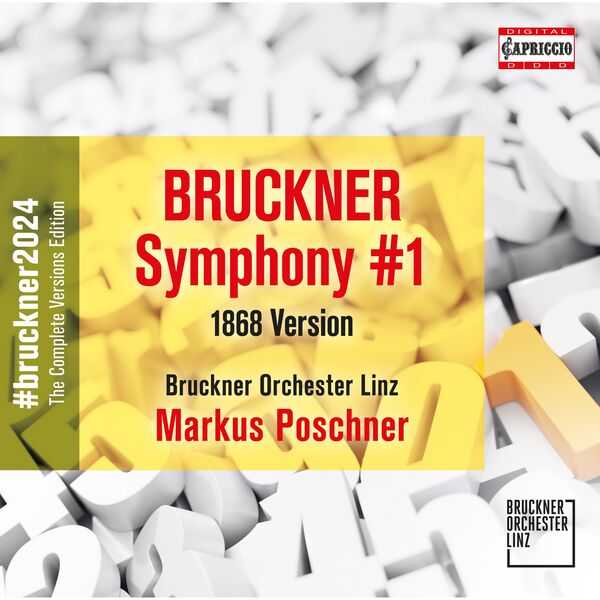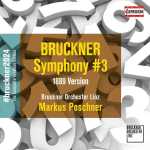

Composer: Anton Bruckner
Orchestra: Bruckner Orchester Linz
Conductor: Markus Poschner
Format: FLAC (tracks)
Label: Capriccio
Catalogue: C8092
Release: 2024
Size: 768 MB
Recovery: +3%
Scan: cover
Symphony No. 1 in C minor
01. I. Allegro
02. II. Adagio
03. III. Scherzo: Schnell – Trio: Langsamer
04. IV. Finale. Bewegt, feurig
This Complete Bruckner Symphonies Edition includes all versions of the symphonies either published or to be published under the auspices of the Austrian National Library and the International Bruckner Society in the Neue Anton Bruckner Gesamtausgabe (‘The New Anton Bruckner Complete Edition’). Bruckner himself reckoned that his career as a professional composer began when he was thirty-nine. With only an exercise for a symphony under his belt – the unnumbered F minor – he was now ready to write his first true symphony. The world, however, was not ready to receive it. First performed, badly, in 1868 in Linz, the work flopped and was put aside until nine years and five symphonies later, when it was gently reworked. A subsequent performance in 1884 was Bruckner’s “most successful Viennese performance to date”, which perplexingly led to a thorough revision that would become the 1891 ‘Vienna‘ version. This recording uses the original 1868 ‘Linz‘ version.
Bruckner, more than any other composer in the classical canon, was a reviser of his works to a point where it is difficult to speak of a definitive text for most of them. Conductor Markus Poschner and the Bruckner Orchestra Linz have undertaken to record all the various versions of Bruckner’s symphonies, excluding transitional versions (of which there are quite a few). Some rarely heard versions have been included. One of these is the so-called “Linz” version of the Symphony No. 1 in C minor, WAB 101, from 1868, much less common than a later 1870s revision also, confusingly, known as the “Linz” version even though it was not made in Linz. It is this early version, with just a few other recordings in the catalog, that Poschner and his group record here. It is tighter than the Symphony No. 1 as it is generally known (the most common is the 1891 “Vienna” version), with Poschner’s reading coming in about four minutes faster than the average for all recordings of the work, and Poschner emphasizes the tight construction, bringing out aspects of traditional symphonic structure along with all the Wagnerian influences. Sample his unusually quick, propulsive treatment of the Scherzo. There may be cleaner performances of this work by major orchestras, but few play with such a sense of commitment and close synchrony with the conductor. The bottom line is that this recording will be of interest to wider audiences than simply those concerned with scholarly interpretation of the Bruckner canon.



